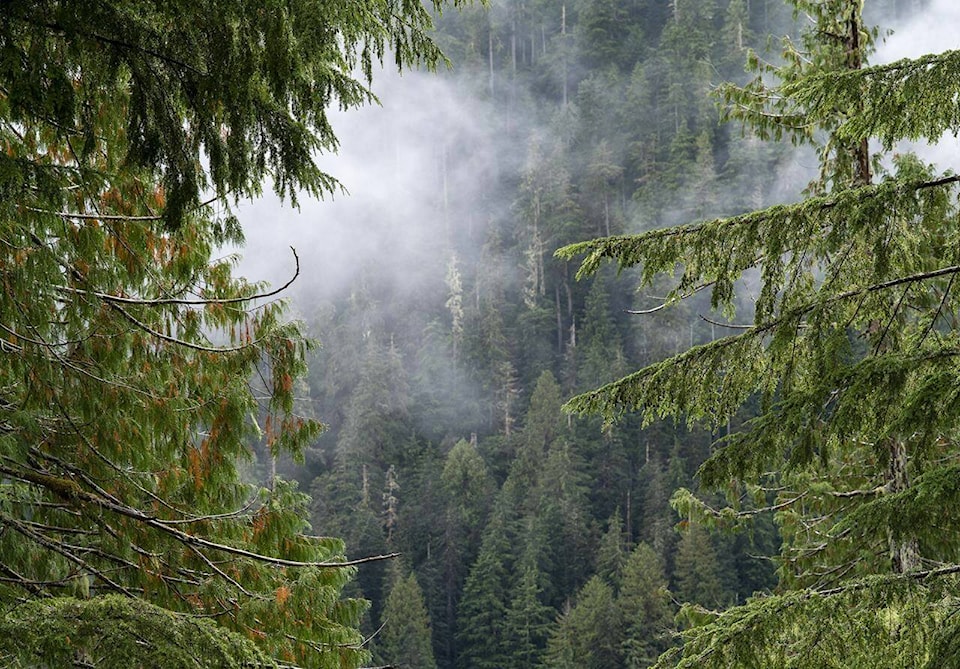Dear Editor,
If a forestry worker loses their job, does anybody hear? Apparently not in Victoria nor in many urban centers.
The recently announced proposal to protect an additional 2.5 million hectares of old growth forest (over half the size of Holland) on top of the 3.5 million hectares will drive a nail in the coffin of the local industry.
The vocal minority appear to be dictating policy as the taxpaying forestry worker is too busy at their jobs to play an active role in demonstrations.
Meantime, the NDP has turned their back on the blue collar and union workers while courting the green vote. The government appointed panel had four environmentalists and one industry rep, and is now selling their decision on radio, T.V. and newspaper. The NDP has turned their back on the blue collar and union workers while courting the green vote.
I have been in the industry for 34 years in both primary larger corporations and smaller added-value businesses. Over the course of my career, I heard first-hand the concerns from environmental groups and global customers. This resulted in sizeable downsizing of the industry over the past three decades to meet sustainable levels and land use criteria. The industry met the demands of the environmental groups such as Greenpeace which is why they no longer campaign against the B.C. Forest industry. The industry has more than paid their pound of flesh. Any further down-sizing will result in loss of scale for the industry resulting in massive job loss. There will be no turning back.
It’s clear that the forest policy is being driven by appealing to the urban voters and the green vote. Over the past two decades many large tracts of old growth have already been sets aside for preservation (see below).
Dozens of sawmills employing thousands of worker, including Hammond Sawmill, have already been closed permanently due to the cutbacks in logging. Millions of dollars in payroll per year have been lost with the Hammond closure alone.
Here are some facts to consider:
· B.C. already has world class forest practices with sustainable certification from P.E.F.C (Pan European Forest Certification). Certified Sustainability is a pre-requisite for a vast majority of markets.
· No deforestation is taking place unlike the tropical rainforest.
· All areas harvested must be re-established as healthy growing forests by law with the same species of trees that were harvested.
· B.C. has already set large tracts of land for preservation such as the Great Bear Rainforest, which is two times the size of Belgium. Strathcona Park on Vancouver Island is six times the size of Stanley Park. Not to mention the Clayoquot which is eight times the size of Stanley Park. To hear protectionist broadcast that the last of the old growth is being logged is an outright lie.
· In total 3.5 million hectares of old growth is already protected (85 per cent the size of Holland).
The B.C. coastal timber is already a poster child of added value which the NDP has been advocating. You only have to take a drive through any industrial areas of the Fraser Valley to find hundreds of independent businesses that add value by planing and profiling to specialty products.
The products from coastal forests are unique and go to products such as guitar bodies, piano boxes, temple carvings, music halls. It’s valued in world market not only for its unique characteristics, but as a responsible choice over alternatives over tropical hardwoods that are illegally logged or de-forested for agriculture. The forest policy should be shaped between the First Nations and the industry with the government’s role as facilitator and regulator to ensure the forest practices meet the standards.
I ask B.C. residents and policy makers to consider the costs of the direct and indirect jobs to thousands of British Columbians. Who will pay for the new schools, hospitals and social programs to deal with the mental health and addictions? Be prepared for higher taxes and lower services if indeed large tracts of working forests are set aside for the special interest groups that want nothing short of preservation.
It’s something you might want to consider the next time up on the Grouse Grind or Squamish Chief hikes. Both areas are healthy second-growth forests logged without today’s high sustainable practices. Most residents would not notice it was logged at all.
Garrick Jay, Pitt Meadows
.
• READ MORE: Timber buy-back, redistribution latest in forest overhaul
• READ MORE: Two-year target for B.C.’s old-growth protection plan
.
Do you have an opinion you’d like to share? Please send us a letter to the editor, including your first and last name, street address, and phone number. Email: editor@mapleridgenews.com
Like us on Facebook and follow us on Twitter.
